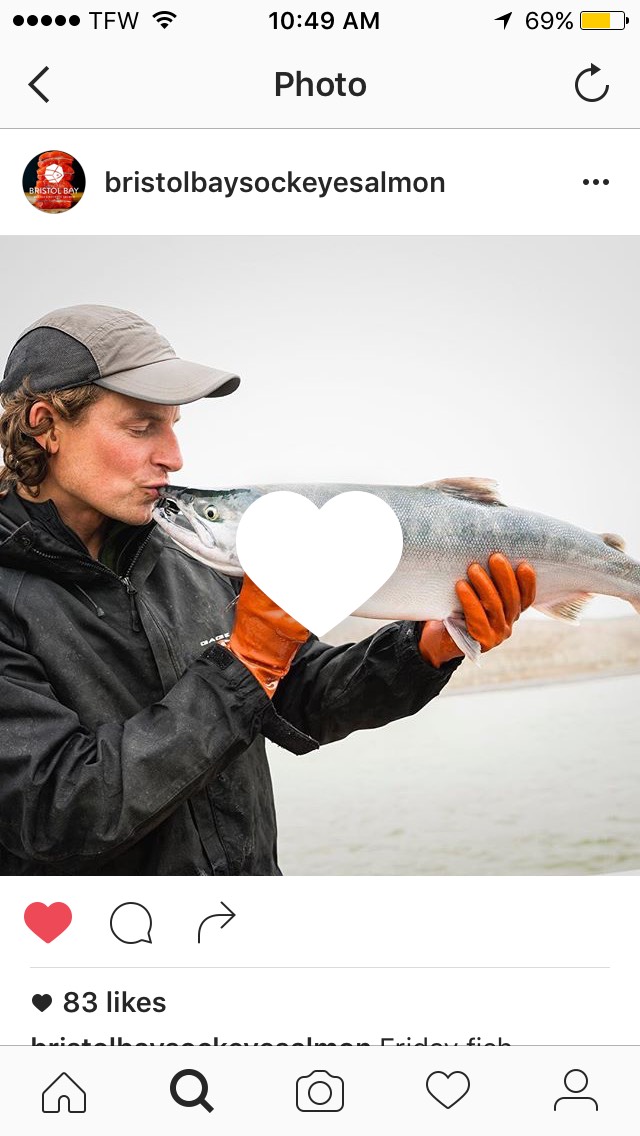The Bristol Bay Regional Seafood Development Association recently announced in its newsletter that it’s launching a new branding pilot in Colorado in September and that its new consumer-facing website is live.
I checked out the new site soon after opening the newsletter and spent the better part of the morning flipping through the recipe gallery. Hot honey broiled salmon? Salmon quinoa taco bowls? Sockeye tortilla soup? Yes, please.
After cruising through some recipes, jotting down a little grocery list and asking myself if 10 a.m. is too early to text my girlfriend about dinner options, I went back to the newsletter to check out the details on this branding campaign.
That’s when I read it: “…the campaign’s primary target is millennials…”
They got me. I don’t know how they did it but they got me. I actually had a pretty filling breakfast for a 23-year-old but there I was, planning my trip down the seafood aisle on a Tuesday morning.
I think the thing that kept me going and on the website were the gorgeous photos scattered throughout the page. The first thing you see is a bright, close-up sockeye fillet, a dramatic shot of the bay and a handsome salmon held by a fisherman. All of the images on the site are, as we millennials say, Insta-worthy. And of course, I discover they have an Instagram account and proceed to scroll through every single photo they’ve posted.
I’ve never been a fan of millennial stereotypes. We’re obviously not all the same, so I'm talking about myself here. This website works well for a handful of reasons. As I mentioned, the photos are on point. Being exposed to so many images every day online, in print and on TV, you’ve got to be bold to stand out. The copy is short and sweet — the website tells me exactly what I need to know about the salmon and fisherman without making me read a book. The recipes, while looking like something I’d pay too much for out on a date, seem simple and completely doable with what I have in my tiny apartment. Mine might not look as pretty, but I left feeling confident that I could get it done. (This is another place where photos are important. I don’t think I’ve ever attempted a recipe without an accompanying photo. I gotta know what it looks like.)
The biggest point for me is the site’s accessibility. Here’s where I will generalize: Millennials are not going to go directly to your website and we aren’t going to sign up for your newsletter. I can’t remember the last time I typed a full URL into my browser or bookmarked a site that wasn’t something I used every day. And everyone wants me to want their newsletter. I don’t want it. So thanks for not hitting me with pop-ups or making me make an account to see those delicious recipes.
Millennials will, however, click on your links on social media. Following accounts on Instagram and Twitter are less intrusive ways to keep up with what your organization is doing. I’m not going to go to bristolbaysockeye.organd plan my meals out for the week but you better believe I’ll drive to the supermarket right now if a photo of a tasty meal pops up on my feed.
The BBRSDA says the concept test period is going to run through the end of the year and the decision on whether or not to proceed nationwide will be made. Who knows if a trendy Instagram page will result in a sales bump. It won’t hurt, though. I’m definitely finding a way to put some Bristol Bay sockeye on my plate this week.







